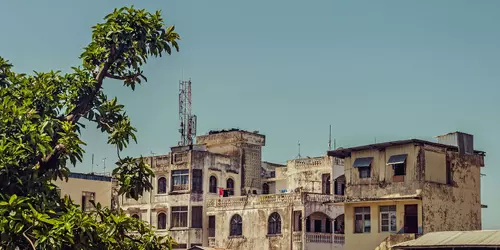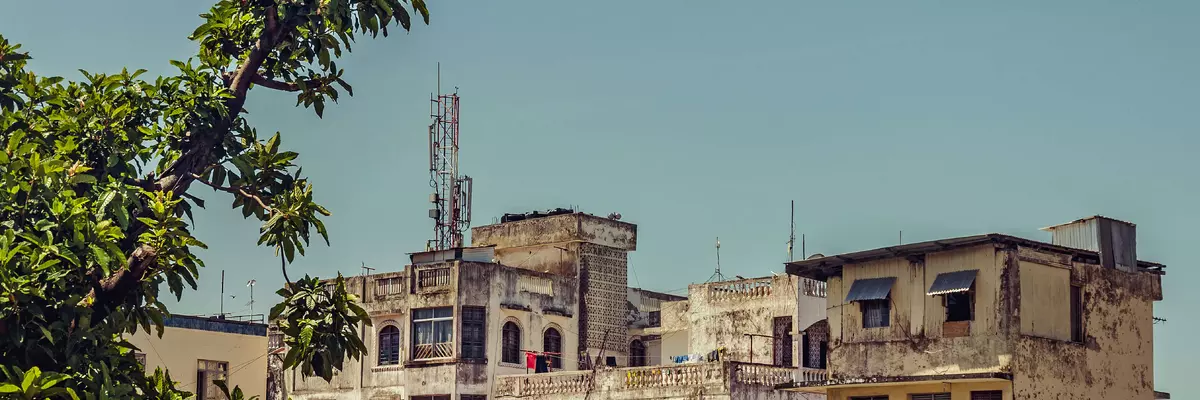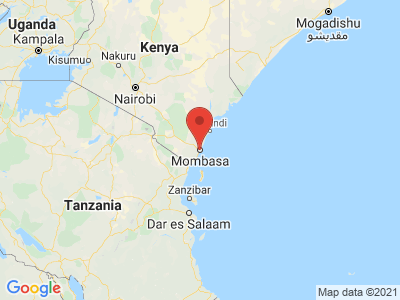Climate Table Mombasa
Jan | Feb | Mar | Apr | May | Jun | Jul | Aug | Sep | Oct | Nov | Dec | |
|---|---|---|---|---|---|---|---|---|---|---|---|---|
| Max. Temperature | 32° | 32° | 33° | 31° | 29° | 29° | 28° | 28° | 29° | 30° | 31° | 32° |
| Min. Temperature | 23° | 23° | 24° | 24° | 23° | 21° | 20° | 20° | 21° | 22° | 23° | 23° |
| Sun Hours | 9 | 9 | 9 | 8 | 6 | 8 | 7 | 8 | 9 | 9 | 9 | 9 |
| Water Temperature | 27° | 28° | 28° | 28° | 28° | 27° | 25° | 25° | 27° | 27° | 27° | 27° |
| Rain Days | 4 | 2 | 5 | 10 | 14 | 9 | 11 | 10 | 9 | 12 | 10 | 6 |
The climate year of Mombasa
The port city of Mombasa, located on an island on the Indian Ocean, is known as a very important economic center in Kenya. The city is the second largest city in Kenya with a population of nearly one million and is also the most important port city with a very long history. Mombasa Island is an island with a size of 13km². The island is connected to the north coast by the Nyali Bridge. The west coast is reached via the Makupa Causeway and the south coast is reached via the Likoni Ferry. The old port of Mombasa is located on the east side and the new port, which is much larger and more protected, is located on the west side of the island. The history of Mombasa goes back to the 12th century, because already at that time the trade with ivory, gold and spices boomed so that the city developed into a flourishing trading metropolis.
General information about Mombasa
When visiting Mombasa, there are many things that should not be missed. Thus, a safari tour through the national parks is definitely part of a visit. But there are also numerous sights, such as the Fort Jesus Museum, which was declared a national monument in 1960. In front of its main entrance are two large cannons, which date back to the First World War and represent the remnants of the battle of two ships. The old town of Mombasa is also very worth seeing, because it is still preserved almost exactly as it was in the 19th century. Thus, one meets here houses in Arabic style in narrow streets. In addition to mosques, you will also find numerous coffee and spice traders. At Nyali Beach you can watch a natural spectacle at low and high tide, a long, beautiful sandy beach invites you to stay and relax. But also a visit to the Indian temple or other historical places should not be missed. Also highly recommended is a ride on the tuk-tuk, the three-wheeled auto-ritscha.
Tourism Mombasa
Mombasa has a tropical climate, which brings with it a high humidity content. Most of the time a very pleasant wind blows. If you want to travel to Mombasa, the best time to travel is from mid-December to mid-March, but also the months from June to October are ideal, because here there are the most sunny hours in Mombasa. In the period from mid-March to May is the big rainy season in Mombasa, in which heavy and very abundant rainfall is to be expected. But also from the end of October to December, there is a lot of rainfall in Mombasa, but it is weaker and shorter, this is called the small rainy season. During the rainy season the sky is often overcast, but continuous rainy days in Mombasa are rather rare. It is better to avoid visiting Mombasa during these two rainy periods, because it is often very humid on the coast during the rainy season. The temperatures in Mombasa are relatively constant and very pleasant throughout the year and the water temperatures of the Kenya Sea leave nothing to be desired.


